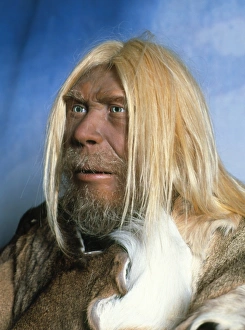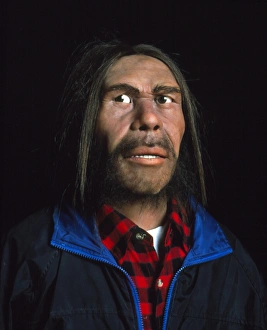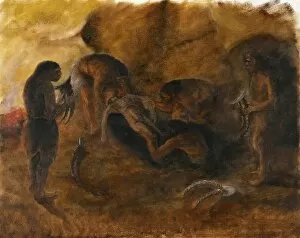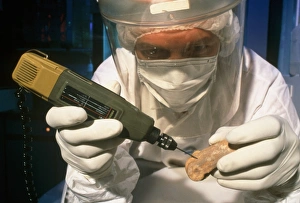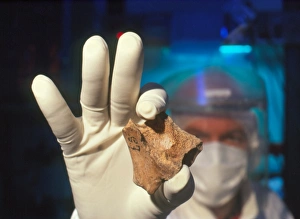Neanderthal Man Collection
The British Association at Swansea (engraving) takes us back to a time when the world was inhabited by an ancient species known as Neanderthal Man
All Professionally Made to Order for Quick Shipping
The British Association at Swansea (engraving) takes us back to a time when the world was inhabited by an ancient species known as Neanderthal Man. Often depicted as a Caveman in popular culture, this c1950 artwork by Shirley Markham captures the imagination of our ancestors and their way of life. Natures evolutionary designs in noses, as explored in 1922, reveal fascinating insights into the physical characteristics of Neanderthals. Their prominent nasal structures were adapted to survive harsh environments and served various purposes. The Evolution of Man is beautifully portrayed by artist Karen Humpage, showcasing the progression from primitive beings to modern humans. Amongst these stages stands Neanderthal Man, a crucial link in our ancestral lineage. Reconstructions at the British Museum offer glimpses into the lives of Neanderthals. A 20th-century depiction presents us with a vivid image of a Neanderthal Woman while another showcases the detailed reconstruction of a high-status burial site found in central Asia. Examining reconstructed skulls allows scientists to delve deeper into understanding these ancient beings. The Reconstructed Neanderthal skull provides valuable information about their anatomy and offers clues about their behavior and lifestyle during 49, 000 BC. A replica Paleolithic Skull belonging to Grimaldi man reminds us that there were other human species coexisting alongside early Homo sapiens. These discoveries shed light on our complex evolutionary history. One cannot discuss Neanderthals without mentioning Pierre Marcellin Boule, an influential French paleontologist who made significant contributions towards unraveling their mysteries during the 20th century. His work paved the way for further research and understanding regarding these enigmatic creatures. From France to Central Asia, archaeological finds continue to shape our knowledge about Neanderthals' existence on Earth thousands of years ago. Each discovery brings us closer to comprehending how they lived, interacted with their environment, and ultimately contributed to our own genetic makeup.














